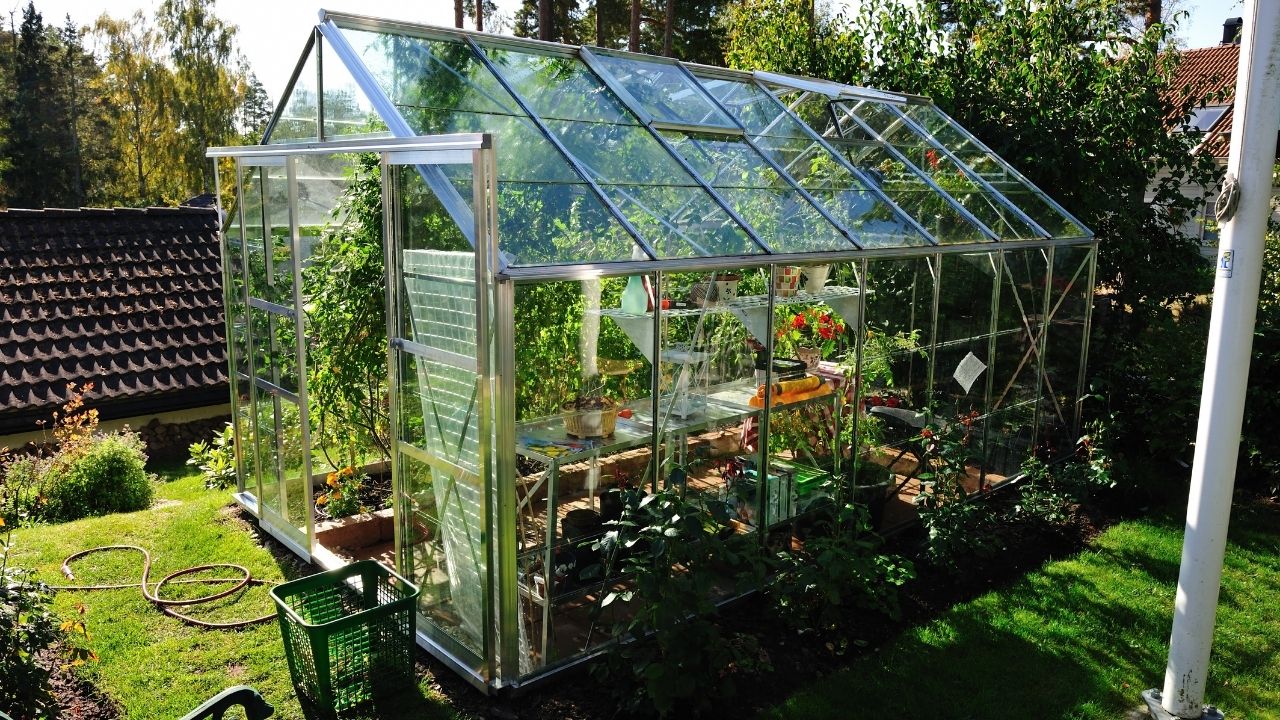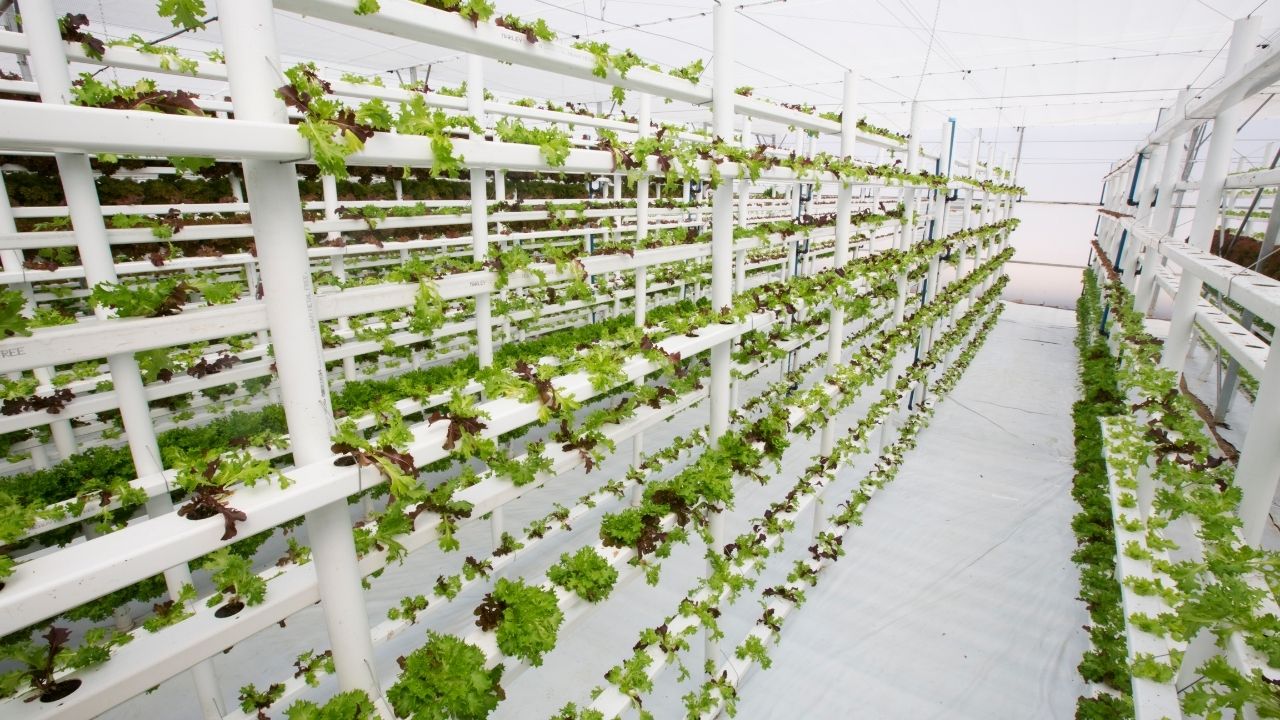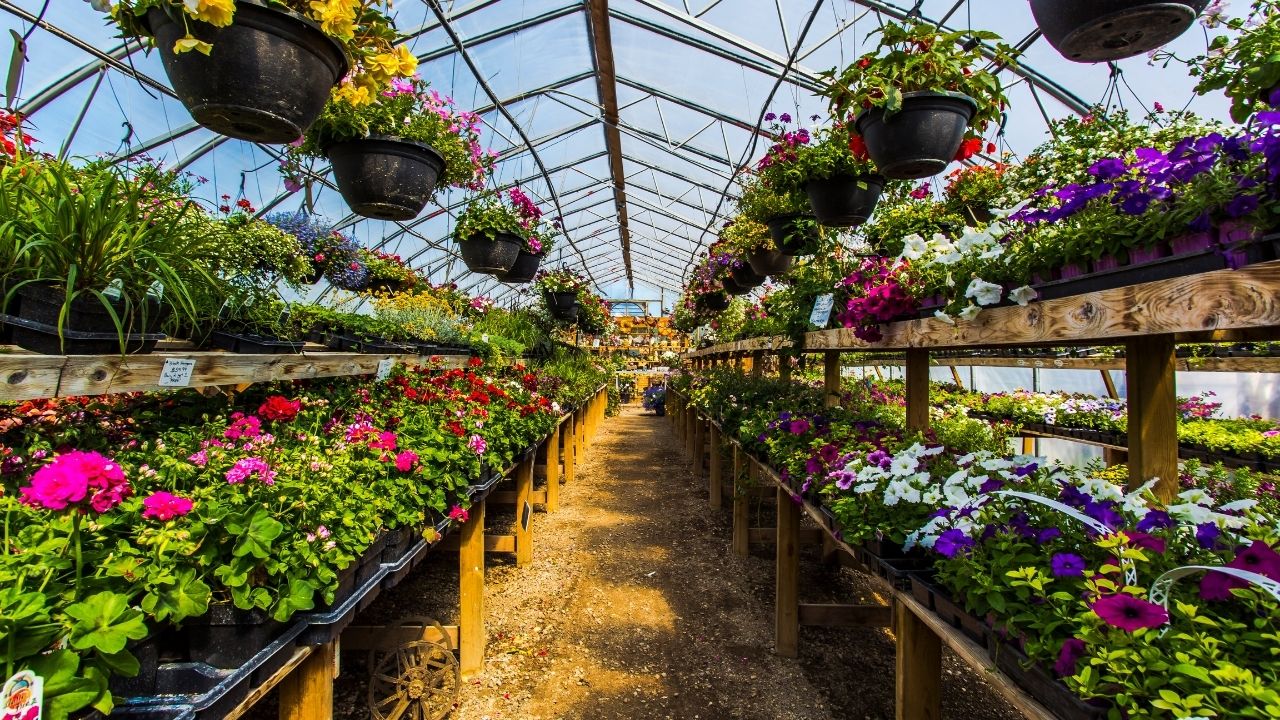
Welcome to our informative guide on the top 10 must-have garden tools for every green thumb.
Whether you're an experienced gardener or just starting out, having the right tools is essential for maintaining a thriving garden.
In this article, we will highlight the essential garden tools that every gardening enthusiast should have in their arsenal.
From pruning shears to watering cans, we will provide you with expert recommendations to help you achieve gardening success.
So, let's dive in and discover the tools that will make your green thumb even greener.
Pruning Shears
Pruning shears are essential tools for maintaining and shaping plants throughout the growing season. Whether you are a seasoned gardener or just starting out, understanding pruning techniques and using the best pruning shears can greatly enhance the health and appearance of your plants.
Pruning shears, also known as secateurs, are designed to make clean and precise cuts, allowing you to remove dead or damaged branches, shape shrubs, and promote new growth. When choosing pruning shears, look for ones with a sharp and durable blade, comfortable handles, and a locking mechanism for safety.

It is important to keep your pruning shears clean and sharp to ensure optimal performance. By mastering pruning techniques and using the best pruning shears, you can unleash the full potential of your garden and enjoy the freedom of creating a beautiful and flourishing outdoor space.
Garden Trowel
A garden trowel is an indispensable tool for every green thumb, allowing for precise and efficient planting and transplanting of flowers, vegetables, and herbs. Here are some key points to consider when using a garden trowel effectively:
- Different types of trowels: There are various types of garden trowels available, such as pointed trowels for digging, narrow trowels for tight spaces, and wide trowels for scooping and spreading.
- Choosing the right trowel for specific gardening tasks: Consider the type of soil, depth of planting, and the size of the plants when selecting a trowel for a specific task.
- Techniques for using a garden trowel effectively: Hold the trowel firmly and use a scooping motion to dig a hole or transplant a plant. Use the trowel's edge to cut through roots or remove weeds.
- Common mistakes to avoid when using a garden trowel: Avoid applying excessive force, which can damage roots or bulbs. Also, ensure proper cleaning and storage of the trowel to prevent rust and maintain its longevity.
Loppers
Loppers are essential tools for gardeners, allowing for precise and effective pruning of branches and stems. Whether you are maintaining a small garden or tending to a large outdoor space, loppers provide the necessary leverage and cutting power to tackle thick branches with ease.
When it comes to pruning techniques, loppers offer the versatility to make clean cuts without causing unnecessary damage to the surrounding plant tissue. However, choosing the right loppers is crucial for optimal performance. Consider the size and type of branches you will be pruning, as well as the ergonomic features of the tool such as grip comfort and cutting capacity.
Investing in a high-quality pair of loppers will ensure that your pruning tasks are efficient and successful, allowing your plants to thrive.
Garden Hose
One essential tool for every green thumb is a garden hose. A garden hose allows gardeners to easily water their plants and maintain a healthy garden. To ensure the longevity and functionality of your garden hose, regular maintenance is necessary. Here are some tips for garden hose maintenance:
- Store your garden hose properly by coiling it up neatly and hanging it on a hose reel or hook.
- Avoid leaving your garden hose exposed to extreme weather conditions, as this can cause damage.
- Check for leaks or cracks in the hose regularly and repair them promptly to prevent water wastage.
- Clean your garden hose regularly to remove any dirt or debris that may clog the nozzle and affect water flow.
When choosing the right garden hose, consider factors such as length, material, and flexibility. A high-quality garden hose will make watering your plants a breeze and ensure efficient water usage.

Garden Rake
The garden rake is an essential tool for any green thumb, with various types and uses depending on the task at hand. From leaf rakes for gathering leaves to landscape rakes for leveling soil, having the right rake can make gardening tasks much easier.
It's important to learn proper raking techniques to avoid strain and injury, and to regularly maintain and care for your rake to ensure its longevity and effectiveness.
Rake Types and Uses
A garden rake is an essential tool for maintaining a well-groomed garden, as it effectively gathers leaves, debris, and loose soil with its sturdy tines. There are different designs of garden rakes available, each with its own specific use and benefits.
Here are four common rake types and their uses:
- Leaf Rake: Designed with flexible tines, leaf rakes are perfect for gathering leaves and other lightweight debris. They are ideal for cleaning up large areas quickly.
- Lawn Rake: With closely spaced tines, lawn rakes are designed to remove dead grass, thatch, and other debris from the surface of the lawn. They help promote healthy growth by allowing air and nutrients to reach the grass roots.
- Garden Rake: Featuring sturdy and slightly curved tines, garden rakes are great for leveling soil, removing rocks and debris, and preparing the ground for planting. They are versatile tools for various gardening tasks.
- Soil Rake: Also known as a bow rake, soil rakes have heavy-duty, rigid tines that are ideal for breaking up compacted soil, spreading mulch, and leveling ground. They are commonly used in landscaping and construction projects.
Using the right rake for the job can make garden maintenance much easier and efficient. Whether you need to clear leaves, prepare the soil, or maintain your lawn, having the appropriate rake at your disposal will ensure successful gardening endeavors.
Proper Raking Techniques
Continuing the discussion on garden rakes, it is essential to understand the proper raking techniques for using a garden rake effectively.
Raking is a fundamental task in gardening, and knowing the correct techniques can make your work more efficient and productive.

First, start by holding the rake with a firm grip and maintain a comfortable stance. When raking, use short, quick strokes to gather debris into piles.
Avoid putting too much pressure on the rake, as it can strain your back and arms.
Additionally, it is crucial to maintain proper maintenance for your garden rake.
Clean it after each use to prevent the accumulation of dirt and debris, and store it in a dry place to avoid rust.
Maintenance and Care
To ensure optimal performance, the garden rake requires regular maintenance and care. Here are some key maintenance and care tips for your garden rake:
- Clean the rake regularly: Remove any debris or dirt from the rake after each use. This will prevent the accumulation of dirt and keep the tines sharp.
- Sharpen the tines: Over time, the tines of the rake may become dull. Use a file or sharpening tool to restore their sharpness. This will ensure efficient raking and prevent damage to your plants.
- Store properly: When not in use, store the garden rake in a dry and covered area. This will protect it from rusting and prolong its lifespan.
- Conduct regular inspections: Check the rake for any signs of wear or damage. Replace any broken or damaged parts to maintain its effectiveness.
By following these maintenance and care tips, you can keep your garden rake in top shape and enjoy its benefits for years to come.
Don't forget to incorporate proper pruning techniques and soil testing to ensure a healthy and thriving garden.

Wheelbarrow
The wheelbarrow, an essential tool for any gardener, allows for easy transport of heavy loads, making it indispensable for tasks such as hauling soil, mulch, and plants.
To ensure its longevity and optimal performance, regular wheelbarrow maintenance is crucial. This includes checking the tire pressure, lubricating the wheel axle, and inspecting for any signs of damage or wear.
Additionally, it is important to choose the right type of wheelbarrow for your specific needs. There are various types available, including traditional wheelbarrows with one wheel, two-wheel models for added stability, and electric-powered wheelbarrows for effortless hauling. Consider the size, weight capacity, and terrain compatibility when selecting a wheelbarrow.
Weeder
Another essential tool for every gardener is the weeder, which allows for efficient removal of weeds and unwanted plants from the garden beds or lawns.
Here are four types of weeders and weeding techniques that can help you maintain a weed-free garden:
- Handheld Weeder: This small, handheld tool is perfect for removing weeds with shallow roots. Simply insert the weeder into the ground next to the weed, press down, and twist to pull it out.
- Long-Handled Weeder: Ideal for removing weeds in larger areas, this tool has a long handle that allows you to stand while weeding. It usually features a forked or hooked end for easy weed removal.
- Weed Puller: This tool uses a lever mechanism to remove weeds, roots and all. Simply place the tool over the weed, step on the footrest, and pull the handle towards you to extract the weed.
- Weed Torch: If you prefer a chemical-free approach, a weed torch can be used to burn weeds without damaging surrounding plants. This tool uses intense heat to kill the weeds and is especially effective for larger areas.
Remember, proper weeding techniques include removing weeds from the root, wearing gloves to protect your hands, and regularly maintaining your garden to prevent weed growth.
With the right weeder and techniques, you can keep your garden free from unwanted plants and enjoy a thriving green space.

Spade
When it comes to gardening, having the best spade is essential.
A spade is a versatile tool that can be used for digging, cutting roots, and moving soil.
In comparison to other tools like shovels or trowels, a spade provides more precision and control, making it a must-have for every green thumb.
Best Spade for Gardening
One of the most essential tools for a gardener is a high-quality spade, which is vital for various gardening tasks. When choosing the right spade, it is important to consider factors such as durability, comfort, and functionality.
To help you make an informed decision, here are the top brands known for producing the best spades:
- Fiskars - Fiskars spades are renowned for their durability and ergonomic design, ensuring comfortable use over long periods.
- Spear & Jackson - This brand offers a wide range of spades, catering to different gardening needs and preferences.
- Bully Tools - Known for their sturdy construction, Bully Tools spades are designed to withstand heavy-duty use.
- Radius Garden - Radius Garden spades feature innovative designs, such as the ergonomic handle, making them easy to use for people with limited mobility.
When choosing a spade, consider the handle length, material, and the type of blade that suits your gardening needs. By investing in a high-quality spade, you can ensure efficient and enjoyable gardening experiences.
Spade Vs Other Tools
Continuing the comparison from the previous subtopic, it is important to note the distinct advantages of using a spade over other garden tools.

When comparing a spade to a shovel, the spade offers a narrower, sharper blade, making it ideal for digging precise holes for planting. The spade's pointed tip allows for easier penetration into the soil, reducing the effort required. In contrast, a shovel has a broader blade, which is better suited for moving larger amounts of soil or mulch.
Additionally, when comparing a spade to a pitchfork, the spade provides greater control and precision. The pitchfork is designed for lifting and turning compost or mulch, while the spade's sharp blade is perfect for cutting through roots or compacted soil. The spade's sturdy construction allows for efficient digging, making it a versatile tool for various gardening tasks.
Garden Fork
Garden forks are frequently used by gardening enthusiasts to cultivate and aerate the soil with precision and efficiency. These versatile tools have long, sturdy handles and multiple tines, making them perfect for a variety of gardening tasks.
Here are some key benefits of using a garden fork:
- Soil aeration: Garden forks help loosen compacted soil, allowing air, water, and nutrients to reach plant roots more easily.
- Weed removal: The sharp tines of a garden fork make it an effective tool for removing weeds from the ground, including stubborn taproots.
- Mixing compost: Garden forks are ideal for turning and mixing compost piles, helping to break down organic matter faster.
- Garden fork alternatives: If you don't have a garden fork, you can use a spading fork or a pitchfork as alternatives, although they may not be as efficient for certain tasks.
Using a garden fork is an essential practice for maintaining a healthy and productive garden.
Watering Can
Moving on to another essential tool for every green thumb, we now turn our attention to the watering can.
A watering can is a versatile tool that is used to water plants, flowers, and vegetables in the garden. It is an essential tool for every gardener, as it allows for precise and controlled watering.

When choosing the right watering can, there are a few factors to consider. Firstly, the capacity of the can should be suitable for the size of your garden. Smaller gardens may require a smaller can, while larger gardens may need a larger capacity.
Secondly, the material of the can is important. Plastic cans are lightweight and easy to handle, while metal cans are more durable but heavier.
Lastly, the spout of the can should have a fine rose or nozzle to ensure a gentle and even flow of water.
Frequently Asked Questions
How Do I Choose the Right Size of Pruning Shears for My Garden?
Choosing the right size of pruning shears for your garden is crucial for maintaining a healthy and thriving outdoor space. Consider the size of the plants, your hand size and strength, the type of pruning, and the quality and durability of the shears.
Can I Use a Garden Trowel for Planting Bulbs?
Using a garden trowel for planting bulbs can be done, but using a bulb planter tool offers several benefits such as precision, efficiency, and reducing strain on the hands.
Are Loppers Suitable for Cutting Thick Branches or Should I Use a Different Tool?
Loppers are suitable for cutting thick branches, making them one of the best pruning tools for trimming hedges and shrubs. However, if you prefer alternatives, a pruning saw or a chainsaw can also be effective for this task.
What Is the Ideal Length for a Garden Hose for a Medium-Sized Garden?
The ideal length for a garden hose in a medium-sized garden depends on the layout and distance from the water source. However, a hose between 50-100 feet long is generally recommended for efficient watering.

Can a Garden Rake Be Used for Removing Rocks and Debris From the Soil?
Yes, a garden rake can be used for removing rocks and debris from the soil. It provides an effective and efficient method for soil preparation, offering benefits such as ease of use and versatility. Alternative methods for removing rocks and debris include hand-picking or using a shovel.






